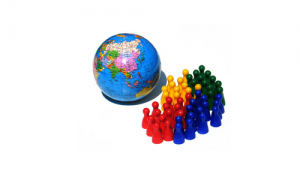Geography and Population of Phuket: A Complete Guide to Thailand’s Island Paradise
Phuket, Thailand’s largest island, is a tropical jewel in the Andaman Sea, celebrated for its white-sand beaches, lush jungles, and vibrant culture. But beyond its tourist appeal, Phuket boasts a unique geographical landscape and a diverse population shaped by centuries of trade, migration, and economic growth. This comprehensive guide explores Phuket’s physical geography, climate, demographics, and urban development, providing a deeper understanding of what makes this island so special.
Where Is Phuket Located?
Phuket is part of Southern Thailand, situated in the Andaman Sea, approximately:
- 862 km south of Bangkok
- 50 km west of Phang Nga Province (home to James Bond Island)
- 150 km north of Krabi
Key Geographic Coordinates:
- Latitude: 7.8804° N
- Longitude: 98.3923° E
The island is connected to mainland Thailand by the Sarasin Bridge in the north, making road travel convenient.
Phuket’s Physical Geography: Mountains, Beaches & Rainforests
1. Topography: Hills, Plains & Coastlines
Phuket’s terrain is a mix of:
✔️ Mountainous regions (30% of the island)
✔️ Coastal plains (ideal for beaches and resorts)
✔️ Dense rainforests (protected in national parks)
Major Mountain Ranges:
- Nakkerd Hills – Home to the Big Buddha, Phuket’s most iconic landmark.
- Khao Phra Thaeo National Park – A rainforest reserve with waterfalls and wildlife.
- Rang Hill – Offers panoramic views of Phuket Town.
2. Beaches & Coastline
Phuket’s western coast is famous for its stunning beaches, while the eastern side features mangrove forests and fishing villages.
Top Beaches by Region:
| Beach | Best For | Vibe |
|---|---|---|
| Patong Beach | Nightlife, water sports | Lively, crowded |
| Karon Beach | Families, long shores | Relaxed |
| Kata Beach | Surfing, sunsets | Balanced |
| Nai Harn Beach | Serenity, nature | Quiet, upscale |
| Mai Khao Beach | Seclusion, luxury resorts | Peaceful |
3. Rivers & Waterfalls
- Bang Yai Canal – Flows through Phuket Town.
- Ton Sai & Bang Pae Waterfalls – Located in Khao Phra Thaeo National Park.
(Fun Fact: Phuket has no major rivers, relying on rainfall and reservoirs for freshwater.)
Phuket’s Climate: When to Visit
Phuket has a tropical monsoon climate, with three distinct seasons:
1. Dry Season (November–April)
- Best time to visit – Sunny skies, low humidity.
- Peak tourist season (December–March).
2. Hot Season (April–May)
- Temperatures reach 35°C (95°F).
- Ideal for early morning beach trips.
3. Rainy Season (May–October)
- Short, heavy downpours (mostly in the afternoons).
- Lower prices, fewer crowds.
(Pro Tip: September is the wettest month; avoid boat trips during storms.)
Phuket’s Population: Who Lives on the Island?
1. Total Population (2024 Estimate)
- ~416,000 residents (official registered population).
- ~1 million+ during peak tourist seasons.
2. Ethnic & Cultural Diversity
Phuket’s population is a melting pot of:
✔️ Thai locals (majority in rural areas).
✔️ Thai-Chinese (descendants of tin miners).
✔️ Muslim-Malay communities (especially in southern districts).
✔️ Expats & migrant workers (Russians, Europeans, Burmese).
3. Key Population Centers
| Area | Population | Characteristics |
|---|---|---|
| Phuket Town | ~80,000 | Historic center, Sino-Portuguese architecture |
| Patong | ~20,000 | Nightlife hub, tourist-heavy |
| Kathu | ~60,000 | Residential, near golf courses |
| Thalang | ~120,000 | Northern district, quieter lifestyle |
(Note: Many residents work in tourism, fishing, or real estate.)
Urban Development & Infrastructure
1. Transportation Networks
- Phuket International Airport (HKT) – Handles ~18 million passengers/year.
- Roads & Highways – Well-developed but prone to traffic jams.
- Public Transport – Tuk-tuks, taxis, motorbike rentals, and Smart Buses.
2. Economic Drivers
- Tourism (70% of GDP) – Hotels, restaurants, nightlife.
- Real Estate – Luxury villas, condos, and resorts.
- Fishing & Agriculture – Rubber, coconuts, and seafood.
(Did You Know? Phuket’s GDP per capita is 3x Thailand’s average due to tourism.)
Environmental Challenges
1. Deforestation & Land Use
- Rapid construction has reduced forest cover.
- Khao Phra Thaeo National Park remains a protected area.
2. Coastal Erosion
- Some beaches (e.g., Kamala, Surin) face erosion due to storms and development.
3. Waste Management
- High tourist numbers strain water and waste systems.
- Efforts underway for sustainable tourism.
Final Thoughts
Phuket’s geography—from its jungle-clad mountains to world-famous beaches—and its diverse population make it one of Southeast Asia’s most dynamic destinations. Whether you’re a traveler, investor, or geography enthusiast, understanding Phuket’s land and people adds depth to your experience.
Planning a trip? Check the best seasons to visit and explore beyond the tourist hotspots!



